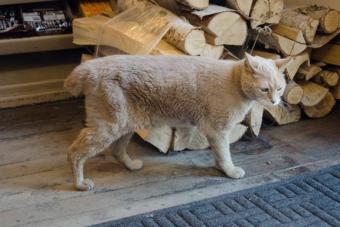Hypotension (hypotension) refers to a significant decrease in blood (or arterial) pressure.
This condition rarely leads to the development of any serious diseases, but because of it, a person may experience discomfort.
What are the causes of hypotension, and how to deal with it?
Symptoms
Many people have experienced low blood pressure. This condition has a name - hypotension, while the A / D indicators are reduced by more than 20% of the norm (120/70).
It is both acute and chronic. Hypotension often indicates the presence of a medical condition.
Symptoms of low blood pressure include:

The reasons
Hypotension is acute, chronic, primary and secondary.
acute form
The causes of acute hypotension are: poisoning, anaphylactic shock, sudden blood loss, disruption of the heart muscle. This phenomenon develops in just a few minutes or hours, while blood flow is disturbed in the body.
Chronic form
Chronic hypotension does not develop all at once, so all organ systems have already adapted to a constant low pressure.
Usually this form of hypotension is observed in people who live in adverse climatic conditions (tropics or north).
In some cases, chronic hypotension is considered normal.. Reduced blood pressure is often observed in athletes, since under heavy loads the body is rebuilt: the heart contracts less often, which leads to hypotension.
 Primary hypotension is an independent disease (in almost all cases - neurocirculatory dystonia).
Primary hypotension is an independent disease (in almost all cases - neurocirculatory dystonia).
The reasons for the development of this disease include: severe stress, lack of sleep, constant fatigue, psychological shocks and trauma.
Secondary
Secondary hypotension is a symptom of another disease. Here is a list of diseases that are accompanied by low blood pressure:
- cardiomyopathy;
- stomach ulcer;
- neoplasms;
- diabetes;
- hypothyroidism;
- osteochondrosis of the cervical spine;
- infections.
Diagnostics
Blood pressure is measured with a special device called a tonometer. Blood pressure is measured three times every 5 minutes. It is recommended to monitor the pressure throughout the day, while it is measured every 3-4 hours.
It is very important to determine the type of hypotension, since the secondary form is a symptom of another disease. To exclude it, an examination is carried out, which includes the following measures: blood test (biochemical), echocardiography, ECG, etc.
Methods of treatment
A healthy lifestyle and regular rest are the mainstay of treatment for hypotension. This disease can be dealt with in several ways: taking medications, using folk remedies (herbs, decoctions, etc.), physiotherapy.
Medical
Hypotension is rarely treated with medication. This method is resorted to when hypotension significantly impairs the quality of life. Drugs containing caffeine are used to treat hypotension.
These include:
- Citrapar (for 5-7 days every 4 hours on a tablet);
- Citramon (per day it is allowed to drink no more than 3 tablets);
- Algon (for 5-7 days every 4 hours on a tablet);
- Pentalgin-N (for 5 days no more than 4 tablets per day);
- Perdolan (for 5 days no more than 3 tablets per day).
For treatment, you can also use herbal preparations that have a tonic effect: lemongrass, ginseng tincture (echinacea, eleutherococcus, etc.). Such tinctures are taken 30 minutes before meals at a dosage of 30 drops per glass of water.
Physiotherapy
Physiotherapy is an excellent way to treat hypotension in both adults and children. Properly selected procedures will increase the pressure to normal levels, improve the general condition.
Here is a list of the most commonly used physical therapy methods:

Home treatment and herbal medicine
Treatment at home involves diet, walking in the fresh air, swimming, outdoor activities. With hypotension, it is useful to drink strong coffee and tea, as well as eat salty foods.
The diet of people who suffer from hypotension includes foods that increase blood pressure: liver, fresh vegetables and fruits, milk, eggs, nuts, some spices (horseradish, cloves, black or red pepper).
Phytotherapy, or the use of herbal preparations, will help increase the pressure. With hypotension, you should drink infusions from combinations of the following medicinal plants:
- chamomile, lemon balm, wormwood, dog rose, angelica, tartar;
- wormwood, lemongrass, wild rose, tartar, chamomile, lemon balm, angelica;
- viburnum, lemongrass, valerian, wormwood, immortelle, aralia.
Prevention
Prevention of hypotension is simple. Lead a healthy lifestyle, eat high-quality and healthy foods, drink plenty of water, walk more on the street. Do not neglect active games and sports.
Pay special attention to your sleep: everyone needs enough rest and sleep. Avoid stress, because they often lead to a decrease in blood pressure.
 Hypotension, unlike hypertension, usually does not lead to serious consequences. Scientists have found that low blood pressure sometimes even prolongs life by several years.
Hypotension, unlike hypertension, usually does not lead to serious consequences. Scientists have found that low blood pressure sometimes even prolongs life by several years.
Chronic hypotension helps to slow down the development of atherosclerosis, since the vessels do not clog and remain clean.
Hypotension rarely manifests itself, moreover, its symptoms almost do not worsen well-being.
What is hypotension? is a phenomenon that is rarely life threatening. Here's what you need to know about this phenomenon:
- if you have low blood pressure, be sure to find out if it indicates the development of any disease;
- lead a healthy lifestyle and eat well, and then the chance of developing hypotension will noticeably decrease;
- if you suffer from hypotension, start your day with a cup of strong coffee or tea;
- try to avoid various stresses;
- get enough sleep and exercise in the morning.
welcomes its readers
Is hypotension a disease or a physiological condition? Causes of hypotension and its treatment. How to determine when it requires treatment and when not? This is what we'll talk about today.
Hypotension is low blood pressure (below 100/60mm Hg). In medical practice, hypotension is often referred to as. like hypotension.
Physiological hypotension
Physiological hypotension is observed when, when measuring blood pressure on a tonometer, we see figures characteristic of hypotension, and the person’s physical condition remains good. This is often associated with the individual characteristics of human physiology and its genetic predisposition. Sometimes this condition occurs in athletes as a response to heavy loads.
Low blood pressure is also observed in some young women and accompanies them throughout their childbearing life. When the ovaries during menopause reduce their activity, hypotension can smoothly turn into hypertension.
Therefore, such a person cannot be called sick. If such people are forced to increase the pressure to generally recognized numbers, this can lead to the development of painful symptoms in them.
Hypotension as a disease
Hypotension as a disease manifests itself when symptoms appear that interfere with a normal life. With hypotension, low pressure in the vessels, the blood does not flow well to the organs, especially to the brain. And a person feels ringing in the ears, headache, dizziness, weakness and fatigue. Usually such patients have cold hands and feet, sometimes wet hands, and a pale face. Sometimes, more often in old age, hypotension occurs with a sharp transition from a lying position to a vertical one.
Distinguish primary hypotension when there are no signs of other diseases and symptomatic when hypotension occurs against the background of various diseases.
Causes of primary (neurocirculatory) hypotension:
- nervous stress
- psychological overload
- mental fatigue
Causes of symptomatic hypotension:
- Vegetovascular diseases
- Chronic fatigue
- Depression
- Diseases of the heart and blood vessels
- Gastric and duodenal ulcer
- Avitaminosis, various intoxications
- Liver disease
- Endocrine disorders, especially decreased adrenal function
- Osteochondrosis, especially of the cervical spine
Hypotonic crisis
The hypotonic crisis is manifested by a sharp decrease in blood pressure. At this time, due to severe weakness, darkening in the eyes and dizziness, fainting is possible. Usually this condition occurs against the background of diseases such as myocardial infarction, arrhythmias and heart blockade, acute blood loss or acute infection, and others.
In these cases, it is necessary not to increase the pressure, but to get rid of the root cause. It is necessary to treat the underlying disease first, and then low blood pressure will no longer be a problem.
Signs of hypotension
- Frequent dull, pressing or throbbing headaches in the temples and sometimes the back of the head, as well as dizziness
- Lethargy and drowsiness, weakness and decreased performance
- Depression, irritability and bad mood
- Memory impairment and absent-mindedness
- Hypersensitivity: to bright light, loud sharp sounds
- Sensitivity to changes in the weather - meteorological dependence
- Hypotonic men, although less common than women, suffer from a decrease in potency. Women - violation of menstruation.
- Fatigue accompanies the life of hypotensive patients: they even wake up. They don't feel rested. Sometimes they mistakenly consider themselves "owls" because their activity is more in the evening than in the morning.
- With physical activity, such people have an increased heart rate and shortness of breath, not associated with heart disease.
- Hypotension patients are very suspicious, constantly focused on their condition, but usually do little on their own to alleviate it.
- Constant yawning in hypotensive patients is not from fatigue, but from a lack of oxygen.
- Hypotensive patients do not tolerate standing in line or walking around a crowded store.
Of course, it is not necessary that all these signs accompany the life of a hypotensive patient. But even if you have two or three of these symptoms, then this is already a reason to change something in your life.
Compared with hypertension, hypotensive patients almost do not suffer from atherosclerosis, which means that they are not afraid of heart attacks. According to statistics, patients with hypotension live longer than those with hypertension, but their quality of life cannot be called good if nothing is done to improve it.
Help with hypotension
The main cure for hypotension is an active lifestyle. This is the only way to make up for the lack of blood supply and avoid oxygen starvation - the root causes of hypotension. But, unfortunately, those suffering from hypotension do not always have enough willpower for this. Do not be lazy, a healthy lifestyle is the solution to the problem and the symptoms of hypotension will not interfere with your life.
Light physical activity, contrast showers, foot massage, walks in any weather every day and with pleasure increase the tone of blood vessels.
Good rest, observance of the daily routine can work wonders.
Drink tonic drinks: good coffee and tea in the morning. Eat more warming foods: spices, a little lard and butter. The main thing here is not to overdo it, so as not to become addicted to these drinks and not overeat.
When overeating, the blood supply is concentrated to the abdominal cavity, and the supply of blood to the brain, and hence oxygen, decreases, and the symptoms of hypotension increase.
Do what you love, do something that can bring joy and satisfaction.
Keep a diary of blood pressure: measure pressure and pulse before meals 3 times a day and write down next to how you feel at this moment. Also write down data when you feel unwell. This will help the cardiologist to draw the right conclusions when making a diagnosis.
Treatment of primary hypotension with pharmaceutical preparations
- drugs with caffeine
- ginseng tincture
- tincture of Manchurian aralia
- tincture of Chinese magnolia vine - the number of drops should correspond to age, you need to take it in the morning 1 time per day
- hawthorn tincture
- leuzea extract
- May lily of the valley tincture
- Ural licorice tincture
- immortelle tincture
- Eleutherococcus tincture
These tinctures can be prepared at home.
They are prepared from this calculation:
- 1 part of raw materials to 10 parts of 40% vodka
- periodically shake the tincture
- keep two weeks in a dark place
Dosage:
- 1 drop of tincture per 2 kg of body weight of an adult
- for a child under 14 years old, 1 drop - a year of life
Contraindications
Be careful, these drugs in case of overdose can cause allergies, internal bleeding, arrhythmia. Consult a doctor before starting treatment, otherwise you may inadvertently hurt yourself more than help.
When a patient is diagnosed hypotension, this means that he is worried about low blood pressure, often accompanied by a decrease in body temperature, pale skin and sweating. If such signs are very rare and have a mild character, the disease does not pose a strong threat to the human body. But if the indicator differs from the norm by 20 percent or more, it is worth being examined by a local therapist and cardiologist, as well as undergoing complex treatment.
Arterial hypotension affects most women of childbearing age: according to statistics, men are five times less likely to suffer from this disease.
The signs of the disease, together with its symptoms, are a kind of vicious circle. The source of hypotension is chronic lack of sleep, apathy, depressive states, respectively - a constant feeling of fatigue. At the same time, the symptoms of the disease are the same depression, depression and chronic fatigue.
Other reasons to be aware of:
- vegetative-vascular dystonia (one of the main causes of hypotension in children and adolescents);
- traumatic brain injury;
- blood loss of large volumes (a consequence of an operation, a deep wound or a birth process);
- decrease in vascular tone in anaphylactic shock (or septic and post-traumatic);
- lack of hormones produced by the thyroid gland;
- chronic heart problems
- fainting caused by a sudden change in body position;
- pregnancy or menstrual days;
- taking pills that reduce blood pressure in violation of dosage norms.
Secondary hypotension may have the following causes:
- diabetes;
- osteochondrosis of the cervical spine;
- rheumatism;
- tuberculosis;
- ulcer and pancreatitis;
- hepatitis or cirrhosis of the liver.
There is another type of disease - the physiological type. It is less dangerous, since it is not associated with any changes in internal organs. The physiological form is diagnosed in patients:
- involved in sports;
- living in the tropics or subtropics;
- working at factories (the field of metallurgy);
- residents of the highlands.
Hypotension (hypotension) is a violation in the vessels. Arterial hypotension is, accordingly, a violation of pressure in the arteries. The pressure depends on the heart rate. The prefix "hypo-" indicates insufficient pressure, that is, the blood in the arteries is not pumped as intensively as it should. You can talk about hypotension if the pressure is 20% lower than normal. The norm is considered to be 120/80, and with indicators lower than 90/60, it is worth considering the presence of hypotension.
Symptoms of hypotension
Blood pressure is a measured value, it can be determined using a tonometer. If the device shows values of 90 mm Hg systolic (so-called upper) and 60 mm Hg diastolic (lower) or lower, then this condition can be called arterial hypotension or low blood pressure.
In addition to the readings of the tonometer, there are the following symptoms of hypotension:
Arterial hypotension very often manifests itself, especially in stuffy rooms. In general, we can say that people with low blood pressure react negatively to the slightest changes in the external environment - to changes in air temperature, humidity, stuffiness, as well as to various emotional stimuli.
By themselves, these signs are not symptoms that accurately confirm the presence of hypotension. Isolated cases of weakness or dizziness do not indicate low pressure. But if there are several symptoms and they are constant, then you should consult a doctor.
Types of arterial hypotension
Hypotension can be primary or secondary. Primary occurs as an independent disease. Most often, its cause is low activity of the autonomic nervous system or psycho-emotional stress. Otherwise, it is called idiopathic.
Secondary hypotension is much more common - resulting from other diseases. Hypotension may accompany the following diseases:
- Endocrine disorders, including, and most often - disorders of the adrenal glands;
- Injuries to internal organs and especially to the brain;
- Cirrhosis of the liver;
- Hepatitis;
- peptic ulcer;
- Others.
It makes no sense to treat secondary low blood pressure without treating the underlying disease., getting rid of which will lead to the normalization of blood pressure.
Hypotension may be:
- Acute;
- chronic;
Acute hypotension occurs with the most severe diagnoses and is characterized by a sharp drop in pressure. Hypotension as a concomitant condition is characteristic of a heart attack, arrhythmias and cardiac disorders, a severe allergic reaction or a large one.
Chronic hypotension is also called physiological. It occurs among athletes, but can also be in people for whom low blood pressure is a variant of the norm and does not cause negative symptoms. Reduced blood pressure is also characteristic of people who permanently live in adverse conditions, for example, among residents of the Far North or the tropics. If low blood pressure worries, then such chronic hypotension is pathological and requires correction and treatment.
Orthostatic hypotension

In some cases, orthostatic collapse can often occur in the morning when waking up and getting out of bed.
Very common orthostatic hypotension - a sharp decrease in blood pressure with a change in body position. This is a fairly common condition among adolescents, when a growing body requires more intensive vascular work. Standing up or standing upright for long periods of time may not provide enough blood to the brain. As a result, the pressure drops, dizziness occurs, it gets dark in the eyes, and fainting may occur. This condition is called orthostatic collapse. If a few minutes after the collapse, there is a decrease in pressure, and the signs of hypotension do not disappear, then we can talk about.
The causes of orthostatic hypotension can be dehydration, taking certain medications (drugs for hypertension, antidepressants), diseases (diabetes, etc.).
Reasons for low blood pressure
As mentioned, other diseases can cause hypotension. The causes of hypotension are also taking medications, including drugs that treat hypertension.
Cause hypotension the following factors:
- Decreased blood volume due to dehydration or blood loss;
- Heart failure, heart failure;
- Poor vascular tone;
- Lack of vitamins;
- Neurosis and depression;
- sleep deprivation;
- External influence: bad weather conditions, for example, high humidity.
The main reason can be considered decreased vascular tone. In hypotensive patients, the vessels (arteries) do not contract fast enough, as a result of which blood is pumped more slowly than is necessary for the normal functioning of the body.
The cause of hypotension may be a congenital predisposition.
Why is hypotension dangerous?
It is not hypotension itself that should cause concern, but the causes of low pressure. It is necessary to identify the true causes of this condition and pay close attention to them in order to prevent the development of serious diseases of the cardiovascular and nervous systems.
Low blood pressure and pregnancy
The danger is low blood pressure during pregnancy. If the expectant mother has hypotension, the fetus experiences oxygen starvation as a result of poor oxygen supply to the placenta, which can result in developmental disorders. Pregnant women with low blood pressure are more likely to experience toxicosis and - in the later stages -.

The insidiousness of hypotension in pregnant women is that it is difficult to notice. Lethargy and fatigue, as well as other associated symptoms of hypotension, are considered some deviation from the normal course of pregnancy, but not hypotension. In such cases, the care of the doctor leading the pregnancy is very important.
Cardiac manifestations
Particular attention requires low lower pressure, which is a sign of low vascular elasticity and leads to. To combat this, the heart begins to work harder, and, consequently, the upper - systolic - pressure rises. The difference between the upper and lower pressure is called pulse pressure and should not exceed 40 mmHg. Any deviations of this difference lead to lesions of the cardiovascular system.

infographic: AiF
Advantages of the pathological condition
Arterial hypotension is most often a physiological state of the body and does not pose a danger. On the contrary, it is easier to say why hypotension is not dangerous. Hypotonics are not afraid of the most insidious disease of our time, which gives rise to and, -. With hypotension, the blood vessels remain clean longer and are not afraid of atherosclerosis. According to statistics, people with chronic hypotension live much longer than hypertensive patients.
Low blood pressure treatment
 In most cases, medical treatment of hypotension is not required. The most common causes of low blood pressure are unhealthy lifestyle and stress. Physiological hypotension should not be treated, but it must be remembered in order to prevent pressure surges. If you are concerned about any one symptom of hypotension, for example, drowsiness, then, first of all, it is worth adjusting the daily routine. This alone is enough to cope with an unpleasant condition. You can call on the fight against hypotension traditional medicine.
In most cases, medical treatment of hypotension is not required. The most common causes of low blood pressure are unhealthy lifestyle and stress. Physiological hypotension should not be treated, but it must be remembered in order to prevent pressure surges. If you are concerned about any one symptom of hypotension, for example, drowsiness, then, first of all, it is worth adjusting the daily routine. This alone is enough to cope with an unpleasant condition. You can call on the fight against hypotension traditional medicine.
If hypotension is caused by neurological disorders or malformations of the cardiovascular system, then the doctor should prescribe treatment. If a person observes the symptoms of low blood pressure for a long time, then you should definitely contact a cardiologist and a neurologist to conduct an examination and prescribe the necessary pills, as well as give recommendations on lifestyle changes.
Hypotension and traditional medicine
Treatment with folk remedies very effective for hypotension. There are many herbal preparations that improve the well-being of hypotensive patients. These plants include:

It is worth taking these herbal preparations in the absence of contraindications according to the usual schemes indicated on the package.
It is believed that freshly brewed coffee saves from low blood pressure. Indeed, the invigorating effect of caffeine has been proven. But, firstly, it is much more contained in green tea, and secondly, addiction to caffeine quickly enough, therefore, the therapeutic effect will disappear.
With a general decrease in tone and the so-called blues, a slight antidepressant effect sufficient to treat hypotension can be exerted by St. John's wort.
Lifestyle with hypotension
Hypotension, if it is not caused by organic disorders, can be perfectly corrected by the right way of life. To avoid the need for medication to treat hypotension, you should:
- Observe the regime of the day;
- Get enough sleep (as a rule, hypotensive patients need more sleep than people with normal pressure);
- Eat right, providing yourself with all the vitamins and minerals, and if this is not possible with normal nutrition, you should take vitamin complexes;
- Drink enough water;
- More often to be in the air, it is advisable to take a walk every day for at least half an hour;
- Go in for sports - even minimal physical activity works wonders, it should not be a professional sport, of course, morning exercises, active games with children are enough;
- Take water procedures - douse yourself with cool water, swim, harden;
- Visit a bath or sauna, which have a beneficial effect on vascular tone;
- Keep a good mood and not worry about trifles.

infographic: AiF
Proper nutrition
It is very important to eat right at low pressure. It is necessary to include foods rich in B vitamins in your diet. Foods that increase blood pressure are yeast products (bread, kvass), milk, potatoes, carrots, nuts, honey. Normalizes the pressure of beets and beet juice, which is recommended to be taken in courses if there are no problems with the gastrointestinal tract.
You can quickly raise low pressure by drinking a cup of coffee with chocolate, but this method will work only if it is used infrequently, and is not regular.

People with low blood pressure, when compared with hypertensive patients, are incredibly lucky, because they do not need to critically limit themselves in salt and spices. Salt retains water, which means it increases blood volume, which has a beneficial effect on blood pressure. Spices and spices also improve the well-being of hypotensive patients, because they “cheer up” the body, make all internal organs work better, increase vascular tone, which also leads to normalization of pressure.
Attention! Excessive salt intake can still harm other organs , so it's not worth it to abuse it.
So let's summarize the above. Arterial hypotension is a condition characterized by low blood pressure in the arteries. It can be primary, that is, arising independently, and secondary - as a result of other diagnoses.
The causes of arterial hypotension are usually either disorders in the work of the cardiovascular and nervous systems, or psycho-emotional stress. In the first case, it is necessary to correct organic lesions with medication, consulting a cardiologist or neurologist. In the second case, you can get by with lifestyle adjustments and traditional medicine.
Video: hypotension in the Philosophy of Health program
Do you periodically experience unexpected drowsiness, weakness, decreased performance? Most people attribute this condition to fatigue, lack of sleep and stress. However, very often the cause of weakness is vascular hypotension - an unpleasant condition, which is expressed in a decrease in blood pressure. The upper pressure during hypotension drops to 100, and the lower one to 65 mm or more.
Vegetative-vascular hypotension, unlike hypertension, does not cause significant damage to the human cardiovascular system. However, it can significantly reduce the quality of human life, as it is accompanied by unpleasant symptoms: weakness, dizziness, nausea, sweating, headache. Such symptoms have an extremely negative impact on a person and his activities, a person's ability to work is significantly reduced. In addition, low blood pressure may indicate the presence of a concomitant disease. Therefore, if you find constantly low blood pressure, you must definitely consult a doctor to find out the causes of hypotension. Also, the doctor will prescribe treatment for vegetative-vascular hypotension and preventive measures against lowering pressure.
Reasons for pressure drop
The reasons for lowering the pressure can be very different. There are such causes of vascular hypotension:

Also, hypotension can be caused by concomitant diseases:
- Violations of cardiac activity;
- Diseases of the nervous system;
- Vegetative-vascular dystonia;
- Metabolic disorders in the body;
- stomach ulcer;
- Osteochondrosis;
- Dehydration of the body.
By identifying the cause of hypotension, you can choose the appropriate treatment that will save a person from the symptoms of low blood pressure.
Manifestations of hypotension
 Sometimes low blood pressure does not manifest itself. If his pressure rises to the norm of an ordinary person, the person feels the symptoms of hypertension. In this case, we can say that low pressure is an innate feature of a particular person and it is not required to correct it.
Sometimes low blood pressure does not manifest itself. If his pressure rises to the norm of an ordinary person, the person feels the symptoms of hypertension. In this case, we can say that low pressure is an innate feature of a particular person and it is not required to correct it.
As a rule, vascular hypotension is manifested by a number of symptoms:
- Weakness and drowsiness;
- Rapid pulse and strong heartbeat with strong physical activity loads;
- Absent-mindedness and a significant decrease in working capacity;
- Sweating of feet and hands;
- Darkening in the eyes and even loss of consciousness;
- Nausea;
- Violation of potency in men, and in women menstruation disorders.
If you find these symptoms, you should consult a doctor to identify the causes. If the cause of poor health is vegetative-vascular hypotension, the doctor will suggest effective methods of prevention and methods to increase pressure.
Fighting methods
The most common way to increase blood pressure is with a cup of black tea or coffee. A glass of grape juice can also help, especially with ginseng added.
Preventive measures will help prevent the occurrence of hypotension:
- A healthy lifestyle will keep blood vessels healthy;
- Hardening and a contrast shower will contribute to the training of blood vessels, as well as increase the overall immunity of the body;
- Full healthy sleep will also be a good prevention of hypotension;
- People prone to low blood pressure should try not to be nervous and maintain peace of mind;
- Traditional medicine offers a number of methods for the prevention of hypotension: St. John's wort, immortelle decoction, prickly harrow, tansy, yarrow and many other recipes.
If low blood pressure is caused by concomitant diseases, it is necessary first of all to deal with the treatment of these diseases. After treatment, the symptoms of hypotension will also disappear.
Thus, if symptoms of hypotension are detected, it is necessary to consult a doctor and determine the causes of this condition.
After discovering the causes, you need to follow a healthy lifestyle and take preventive measures to prevent a decrease in pressure.





